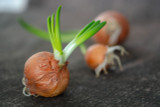Tips To Grow Celery From The Planting To Harvesting Stages
Celery is a fantastic and versatile garden plant. This delightful vegetable is a key ingredient in many dishes, including salads, stir-fries, soups, sauces, and casseroles. Growing celery is relatively simple, and it can provide fresh, crunchy stalks for an extended period. Let's explore the process of growing celery, from seed planting to harvest.
There are primarily two types of celery: the crunchy, pale variety and the self-blanching type. To achieve crunchy, pale celery, pile soil around the stems. Some growers prefer using cardboard tubes, pipes, or collars to blanch celery; however, trenching is a more straightforward method. Self-blanching celery, on the other hand, doesn't require any blanching steps and yields delicious, easy-to-grow stems.
Sowing Celery Seeds
Early spring is the ideal time to plant celery seeds in a sheltered environment. Sowing these tiny seeds demands precision and care. Fill pots or seed trays halfway with quality seed starting mix and gently press down. Gently tap the seed packet above the potting mix, allowing the seeds to scatter onto the surface, ideally around an inch (2 cm) apart. Afterward, press down on the seeds lightly.
Cover the seeds with a slim layer of potting soil or vermiculite to ensure they receive adequate light for growth. This also helps keep the seeds moist. Water from below and then remove the trays or containers.
Celery seeds require mild warmth to germinate. If temperatures are low, place them in a propagator set to 60ºF (15ºC) or on an indoor windowsill. Germination may take up to three weeks, so be patient. Once the seedlings have grown sufficiently, transplant them into plug trays or pots to provide additional space.
Planting Celery
Celery thrives in soil enriched with compost or well-rotted manure. Since wild celery is typically found in damp areas, cultivated celery requires a sunny location with consistent water availability.
Acclimate celery plants for two weeks prior to planting. Gradually increase the time they spend outdoors each day, but bring them back inside if frost is a possibility. Plant them after the last expected frost date to avoid potential damage from sudden cold snaps. If you'd rather not sow seeds yourself, Online seed retailers such as Freedom Farms offer ready-to-plant celery.
Self-blanching varieties should be planted nine inches (23 cm) apart to provide shade for the stems and encourage blanching. Trenching varieties need trenches about a foot (30 cm) apart and deep.
Harvesting Celery
Keep celery plants well-watered after planting to prevent bolting and stringiness. To boost young plants' growth, use a nutrient-rich organic fertilizer. Coffee grounds and comfrey pellets mixed into the soil between plants are effective options. Mulching with manure can also benefit the plants, as it provides nutrients, cools the roots, and retains soil moisture. Start earthing up trench varieties once the stems reach about a foot (30 cm) tall, adding about three inches (8 cm) of soil each time until no more soil can be added.
Watch out for early snails, which can damage celery plants. Slugs can be trapped using beer traps and then removed.
Now that you know how to grow celery, it's time to enjoy the harvest! Celery can be harvested from summer to fall, or until hard frosts stop growth. In milder climates, celery can even survive through winter, producing a few stems during winter and spring before it starts to flower. To extend the plant's productivity, you can either cut or selectively pick individual stems.
Properly harvesting celery involves cutting the entire plant at the base, just above the soil line, or selecting the outer stalks and working your way toward the center. When choosing individual stalks, be sure to leave the central, younger stalks intact, as this will encourage new growth and prolong the plant's overall yield.
Recent Posts
-
The Secrets To Growing Radishes In Containers
Container gardening is a popular way to grow vegetables like radishes. Growing radishes in container …26th Jun 2023 -
How To Successfully Grow Onions From Seeds
Many recipes use onions to give a strong taste and smell. Growing onions from seeds is better than b …26th Jun 2023 -
How To Grow Radishes At Home: A Step-By-Step Guide
Growing your radishes at home can be a rewarding and delicious endeavor. These crispy and spicy vegg …26th Jun 2023




